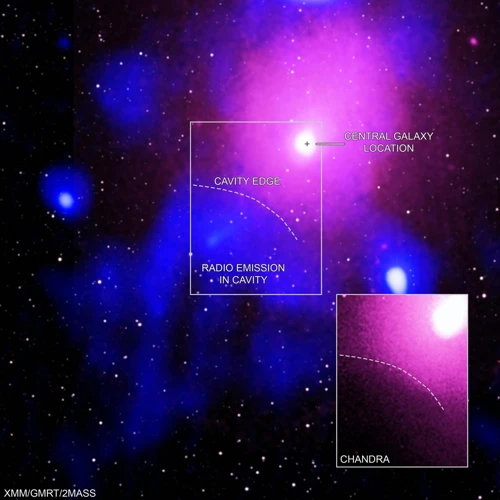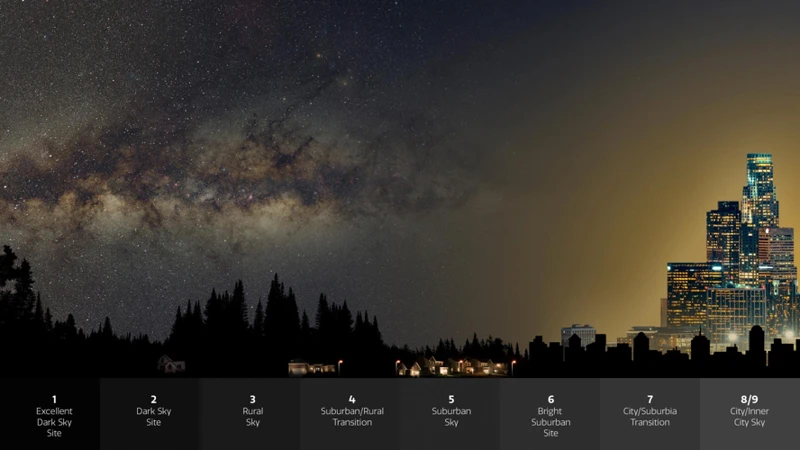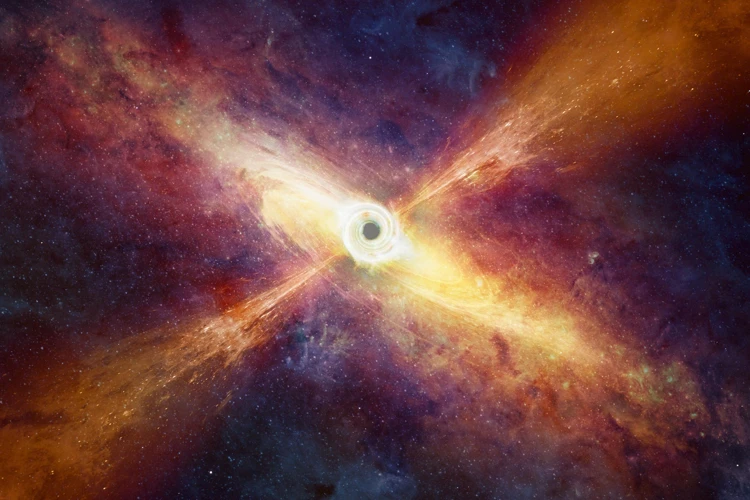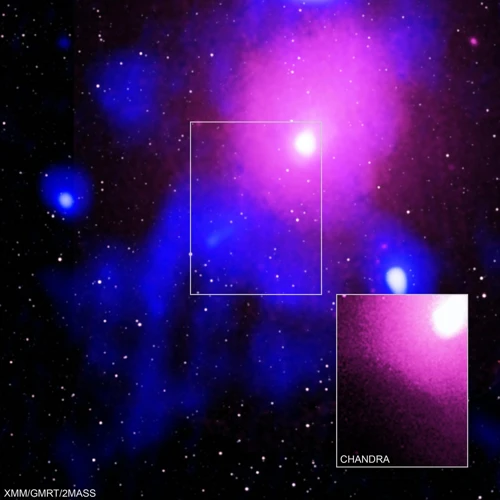Have you ever looked up at the night sky and been mesmerized by the dazzling display of stars? Unfortunately, in many parts of the world, this captivating sight is becoming increasingly rare. The culprit? Light pollution. This phenomenon, characterized by the excessive and poorly directed artificial light, has a significant impact on star visibility, disrupting our connection to the cosmos. In this article, we will delve into the effects of light pollution on star visibility, explore its causes, discuss the consequences it has on ecosystems and human health, and provide practical solutions to mitigate its detrimental effects. So, fasten your seatbelt and prepare to embark on a journey through the mesmerizing universe of light pollution and its impact on star visibility!
What is light pollution?

Light pollution refers to the excessive and misdirected artificial light that is emitted into the night sky. It is caused by various sources such as streetlights, buildings, advertisements, and sports facilities, which collectively contribute to the brightening of the nocturnal environment. This excess artificial light not only interferes with our ability to view stars and celestial bodies but also has a range of negative impacts on the environment and human health. Light pollution is a global issue that affects both urban and rural areas, hindering our ability to fully experience the beauty and wonder of the night sky.
The effects of light pollution on star visibility

The effects of light pollution on star visibility are significant and far-reaching. Firstly, light pollution creates a phenomenon known as sky glow, where the night sky appears hazy and washed out, making it difficult to see individual stars and constellations with clarity. Secondly, it reduces contrast in the night sky, making it challenging to distinguish between faint stars and the background glow caused by artificial lighting. Lastly, light pollution obstructs the view of celestial objects by creating a veil of glow that diminishes the visibility of distant galaxies, planets, and other celestial bodies. As a result, our ability to appreciate and study the stars is significantly hindered. To learn more about identifying constellations in the night sky, check out our Beginner’s Guide to Identifying Constellations in the Night Sky.
1. Sky Glow
Sky glow is a prominent effect of light pollution that occurs when artificial light scatters and reflects off particles and molecules in the atmosphere, creating a bright glow over urban areas. This diffusion of light causes a general illumination of the night sky, making it difficult to see stars and other celestial objects. Instead of a dark backdrop with sparkling stars, we are left with a hazy, washed-out sky. Sky glow not only masks the beauty of the stars but also disrupts natural ecosystems and interferes with astronomical research and observation. To truly appreciate the vastness and majesty of the night sky, we must combat light pollution and reclaim our view of the stars.
2. Reduced Contrast
Reduced contrast is another significant effect of light pollution on star visibility. When the night sky is polluted with artificial light, it creates a veil of brightness that washes out the natural contrast between the stars and the dark background. This reduction in contrast makes it difficult to discern individual stars or constellations, diminishing the overall celestial beauty that can be observed. The bright lights that scatter and reflect off atmospheric particles create a glowing effect known as sky glow, further obscuring the details and intricacies of the stars above. To truly appreciate the celestial wonders, it is necessary to minimize light pollution so that the contrast between the stars and the night sky can be restored, allowing us to once again marvel at the cosmic spectacle.Using a telescope can greatly enhance the contrast and visibility of stars, allowing us to explore celestial objects with greater clarity.
3. Obstructed View
Obstructed view is another significant effect of light pollution on star visibility. When the night sky is filled with excessive artificial lighting, it creates a glare that obscures the view of stars and other celestial objects. This glare is caused by the scattering of light particles in the atmosphere, making it difficult to distinguish individual stars and constellations. Additionally, bright lights can create a phenomenon known as skyglow, which further reduces star visibility by illuminating the atmosphere and creating a hazy glow that obscures the natural darkness of the sky. As a result, astronomers and stargazing enthusiasts alike face challenges in observing and studying the stars. The obstructed view not only deprives us of the beauty and inspiration that the night sky offers but also hampers scientific research and our understanding of the universe. To truly appreciate the connection between stars and ancient mythology, or to explore the secrets of the cosmos with a telescope, it is crucial to address the issue of light pollution and restore the unimpeded view of the stars.
Causes of light pollution

- Artificial Lighting: The primary cause of light pollution is the widespread use of excessive and poorly designed outdoor lighting fixtures. Streetlights, buildings, and residential lighting often emit bright and unshielded light, leading to unnecessary skyglow and light scattering.
- Urbanization: The process of urbanization contributes significantly to light pollution. As cities expand, more artificial light sources are added, and the overall brightness of the night sky increases. The high concentration of buildings and infrastructure in urban areas amplifies the effects of light pollution.
- Advertising and Sports Lighting: Large-scale advertising displays, illuminated billboards, and sports facilities with powerful floodlights also contribute to light pollution. These bright sources of light can be seen from miles away, further diminishing our ability to see the stars clearly.
The causes of light pollution are multifaceted, with each contributing to the overall increase in artificial light in the night sky. It is important to address these causes to preserve the darkness needed for optimal stargazing and to minimize the negative impacts on ecosystems and human health.
1. Artificial Lighting
One of the primary causes of light pollution is artificial lighting. The widespread use of artificial lighting, such as streetlights, building lights, and outdoor fixtures, has led to a significant increase in the amount of light that is scattered into the atmosphere at night. Many of these sources of artificial light are designed without consideration for their impact on the night sky, resulting in excessive brightness and unnecessary upward light dispersement. The intensity and direction of the light emitted from these sources can create a glow in the atmosphere known as sky glow, which obscures the natural darkness and makes it difficult to observe stars. Additionally, the use of bright and poorly shielded lights can also lead to reduced contrast between the stars and the background sky, making celestial objects less visible and diminishing the overall quality of the stargazing experience. To combat light pollution caused by artificial lighting, the use of properly designed lighting fixtures that minimize glare and light trespass is essential. By directing and shielding the light downward, we can reduce the negative impact on the visibility of stars and promote a more sustainable approach to outdoor lighting. To learn more about the fascinating connection between stars and ancient mythology, check out our article on “The Fascinating Connection Between Stars and Ancient Mythology“.
2. Urbanization
Urbanization is a key factor contributing to the increase in light pollution. As cities and towns expand, the demand for artificial lighting also grows. The proliferation of streetlights, high-rise buildings, and illuminated signs in urban areas results in a significant increase in the amount of light escaping into the night sky. Additionally, urban environments tend to have higher population densities, leading to a higher concentration of artificial light sources. This concentration further exacerbates light pollution, as the cumulative effect of many individual sources leads to a brighter overall nighttime environment. The upward illumination from urban areas creates a phenomenon known as sky glow, where the night sky appears hazy and washed out, obscuring the visibility of stars. Urbanization plays a substantial role in the degradation of star visibility and highlights the need for sustainable lighting practices in growing urban areas.
3. Advertising and Sports Lighting
Advertising and sports lighting are significant contributors to light pollution. In urban areas, brightly lit billboards and neon signs not only attract attention during the day but also continue to illuminate the night sky, even when they may not be necessary. These illuminated advertisements generate excessive light, which scatters into the atmosphere, creating a hazy glow that obscures the stars. Similarly, sports stadiums and arenas often employ powerful floodlights to illuminate the playing field. While these lights are essential for nighttime sporting events, they also have the unintended consequence of contributing to light pollution. The intense and expansive lighting systems used in these facilities emit a significant amount of upward-directed and unshielded light, further diminishing the visibility of stars in the surrounding area. Addressing the issue of excessive lighting in advertising and sports facilities is crucial for reducing light pollution and preserving the beauty of the night sky.
Consequences of light pollution

The consequences of light pollution are far-reaching and have profound impacts on various aspects of our lives. First and foremost, light pollution disrupts ecosystems by interfering with the natural behaviors of animals and plants. Nocturnal animals, for example, rely on darkness for hunting, reproduction, and navigation, and the excess artificial light disrupts these crucial activities. Additionally, light pollution can lead to health issues, affecting both humans and wildlife. Exposure to artificial light at night disrupts our circadian rhythm, which can result in sleep disorders, hormonal imbalances, and increased risk of chronic diseases. Light pollution can cause a loss of cultural heritage as it obscures our view of the night sky, which has played a significant role in ancient mythology, stargazing, and navigation. By understanding the consequences of light pollution, we can work towards finding solutions to preserve the darkness of the night sky and mitigate the negative impacts it has on our environment and well-being.
1. Disrupted Ecosystems
Disrupted ecosystems is one of the major consequences of light pollution. The excessive artificial light at night disrupts the natural rhythms and behaviors of various organisms. Many species rely on darkness for essential activities such as foraging, reproduction, and migration. The presence of artificial light interferes with these processes, leading to changes in feeding patterns, reproductive success, and overall ecological balance. Nocturnal animals, such as bats and insects, are particularly affected by light pollution as it disrupts their navigation and hunting abilities. Birds may become disoriented by illuminated buildings and crash into them, resulting in injuries or death. Additionally, artificial lights can attract and confuse sea turtle hatchlings, causing them to stray away from the ocean and face risks of dehydration, predation, or being hit by vehicles. The disruption of ecosystems due to light pollution has the potential to cause a ripple effect throughout food chains and ecosystem dynamics, posing a threat to biodiversity and ecosystem stability.
2. Health Impacts
Light pollution not only affects our ability to enjoy the stars, but it also has significant health impacts. Exposure to excessive artificial light at night can disrupt our natural sleep-wake cycle, known as the circadian rhythm. This disruption can lead to various health issues, including insomnia, fatigue, and decreased overall sleep quality. The bright and constant illumination from light pollution can also suppress the production of melatonin, a hormone that plays a crucial role in regulating our sleep patterns, immune system, and overall well-being. Additionally, studies have shown a correlation between light pollution and an increased risk of chronic conditions such as obesity, diabetes, cardiovascular diseases, and even certain types of cancer. It is evident that the pervasive presence of artificial light at night can have detrimental effects on our physical and mental health, highlighting the importance of addressing light pollution for the sake of our well-being.
3. Loss of Cultural Heritage
The impact of light pollution goes beyond the loss of star visibility and its effects on ecosystems and health. It also leads to the loss of cultural heritage. Throughout history, humans have relied on the stars to navigate, mark the passage of time, and shape their understanding of the world. Ancient civilizations, such as the Egyptians and the Mayans, developed intricate astronomical systems that guided their daily activities and religious practices. However, with the increasing prevalence of light pollution, many people are no longer able to witness the same night sky that inspired these ancient civilizations. The constellations and celestial events that were once deeply woven into our cultural fabric are now fading from view, leading to a loss of connection with our past and a diminishing appreciation for the wonders of the cosmos. It is important to recognize the value of preserving our cultural heritage in relation to the night sky and take steps to reduce light pollution so that future generations can continue to experience the celestial beauty that has shaped human culture for centuries.
Solutions to reduce light pollution
To combat the detrimental effects of light pollution and preserve our connection to the stars, it is crucial to implement effective solutions. One solution is to use properly designed lighting fixtures that minimize light pollution by directing light downward where it is needed, rather than scattering it in all directions. This can be achieved through the installation of shields or hoods on outdoor lights. Additionally, promoting dark sky policies at local and regional levels can help reduce light pollution by regulating the type and intensity of outdoor lighting. These policies may include requirements for shielded fixtures, dimming lights during certain hours, or switching to energy-efficient lighting options. Raising awareness about the importance of dark skies and the impacts of light pollution can encourage individuals and communities to make conscious choices in their lighting practices. By implementing these solutions, we can preserve the beauty of the night sky and ensure that future generations can continue to marvel at the wonders of the universe.
1. Use Properly Designed Lighting Fixtures
One effective solution to reduce light pollution is to use properly designed lighting fixtures. These fixtures are specifically designed to minimize upward light leakage and concentrate the light downward, where it is needed the most. By directing the light downward, it reduces the amount of light that escapes into the sky and contributes to sky glow. Full cut-off fixtures are particularly effective in minimizing light pollution as they completely shield the light source from view at or above a horizontal plane. This ensures that the light is directed only towards the intended area and does not spill over into the surroundings. Additionally, low-glare fixtures with efficient shielding help to reduce the amount of light scattered in the atmosphere, improving visibility and reducing light trespass. By implementing properly designed lighting fixtures, we can significantly reduce the impact of light pollution on star visibility and create a more sustainable and star-friendly environment for everyone to enjoy.
2. Promote Dark Sky Policies
Promoting Dark Sky Policies is a crucial step in reducing light pollution and preserving our ability to see stars. These policies aim to regulate outdoor lighting and promote practices that minimize light pollution. Here are some key strategies that can be implemented to promote dark sky policies:
- Implement Light Curfews: Establishing specific times during which non-essential outdoor lights must be turned off can significantly reduce light pollution. This can be particularly effective in urban areas where there is a high concentration of artificial lighting.
- Encourage Shielding: Encouraging the use of properly designed lighting fixtures with shields can help direct the light downward and reduce its upward dispersion. This helps eliminate unnecessary light spill and reduces sky glow.
- Educate and Collaborate: Raising awareness about the importance of dark skies and the impact of light pollution can help garner support for dark sky policies. Collaboration with local governments, organizations, and communities is essential in developing and implementing effective strategies.
- Incentivize Dark Sky Lighting: Providing incentives and rewards for businesses and individuals who adopt dark sky-friendly lighting practices can motivate them to make the necessary changes. This can be in the form of tax benefits, awards, or recognition.
- Lighting Standards and Regulations: Establishing and enforcing lighting standards and regulations can ensure that outdoor lighting installations are designed to minimize light pollution. This includes implementing restrictions on excessive brightness and light trespass.
By promoting dark sky policies, we can create a more sustainable and star-friendly environment, allowing our communities to reconnect with the beauty of the night sky and ultimately preserve this natural wonder for future generations.
3. Raise Awareness
Raising awareness about light pollution is crucial in order to bring about change and reduce its impact on star visibility. Here are some effective ways to raise awareness:
- Educational campaigns: Launching educational campaigns and workshops can help people understand the negative effects of light pollution. These initiatives can target schools, community centers, and local organizations to educate people about the importance of preserving dark skies and the steps they can take to reduce light pollution.
- Public events: Organize public events such as stargazing nights, astronomy talks, or night sky photography exhibitions. These events can showcase the beauty of the night sky and highlight the impact of light pollution on star visibility. It provides an opportunity for people to experience the wonder of the cosmos and become inspired to protect our darkness.
- Collaboration with local authorities: Engage with local authorities and policymakers to advocate for dark-sky friendly policies and regulations. Work together to establish lighting ordinances and guidelines that promote efficient and responsible outdoor lighting practices to minimize light pollution.
- Social media and online platforms: Utilize social media platforms, websites, and blogs to disseminate information about light pollution and its consequences. Share stunning night sky images, informative articles, and practical tips to reduce light pollution. Encourage online discussions and collaborations to create a community of individuals committed to preserving the beauty of starry nights.
- Collaboration with environmental organizations: Partner with local and national environmental organizations that focus on light pollution and dark sky preservation. Join forces to organize events, conduct research, and advocate for policies that promote responsible lighting practices.
By raising awareness, we can empower individuals and communities to take action and make a positive difference in reducing light pollution. Together, we can ensure that future generations can still marvel at the breathtaking wonders of the night sky.
Conclusion
In conclusion, light pollution poses a significant threat to star visibility and our connection to the cosmos. The excessive and poorly directed artificial light not only diminishes the clarity and visibility of stars but also disrupts ecosystems, impacts human health, and jeopardizes our cultural heritage. However, there are solutions that can help reduce light pollution, such as using properly designed lighting fixtures, promoting dark sky policies, and raising awareness about the issue. By implementing these solutions, we can preserve the beauty of the night sky, protect natural habitats, and ensure that future generations can continue to be inspired by the wonders of the universe. Let us join together in the fight against light pollution and strive to reclaim the awe-inspiring starry nights that have captivated humanity for centuries.
Frequently Asked Questions
1. How does light pollution affect our ability to see stars?
Light pollution creates a brightening of the night sky, resulting in a phenomenon known as sky glow. This reduces the contrast between the stars and the background sky, making it difficult to see fainter stars and dimmer celestial objects.
2. What is sky glow?
Sky glow refers to the brightening of the night sky caused by the scattering and reflection of artificial light. It creates an illuminated haze that masks the fainter stars and diminishes the overall visibility of the night sky.
3. How does light pollution impact wildlife?
Light pollution disrupts the natural behaviors and habitats of various species of animals. It can affect their migration patterns, breeding cycles, and feeding habits. Many nocturnal creatures rely on darkness for navigation and hunting, so excessive artificial light can disrupt their natural rhythms and survival instincts.
4. Can light pollution have health effects on humans?
Yes, light pollution can have adverse effects on human health. The exposure to excessive artificial light at night can disrupt our circadian rhythms, leading to sleep disturbances, reduced melatonin production, and increased risks of various health issues, including obesity, diabetes, and certain types of cancer.
5. Is light pollution only a problem in urban areas?
No, light pollution affects both urban and rural areas. While urban areas tend to have more artificial light sources, rural areas can also face challenges due to stray or misdirected light from nearby cities or towns. This can still impact the visibility of stars and have ecological consequences.
6. How can light pollution affect cultural heritage?
Light pollution can erode our connection with cultural heritage sites that have a historical or astronomical significance. Excessive artificial light can detract from the night-time beauty and celestial observations that were once integral to the cultural and religious practices of ancient civilizations.
7. Can light pollution be reversed?
While it may not be completely reversible, light pollution can be mitigated through various measures. Implementing dark sky policies, using properly designed lighting fixtures, and raising awareness among individuals and communities can all contribute to reducing light pollution and preserving our view of the stars.
8. Does light pollution affect the performance of telescopes?
Yes, light pollution can significantly impact the performance of telescopes. The excess artificial light makes it harder for telescopes to capture clear and sharp images of celestial objects, reducing the overall quality of astronomical observations.
9. How can individuals contribute to reducing light pollution?
Individuals can play a vital role in reducing light pollution. By using shielded outdoor lighting fixtures, turning off unnecessary lights, and supporting dark sky initiatives, we can all contribute to minimizing the negative impacts of light pollution on star visibility.
10. Where can I learn more about identifying constellations in the night sky?
If you are eager to learn more about identifying constellations in the night sky, you can check out our helpful guide here. It provides useful tips and techniques for stargazing and identifying different constellations.








